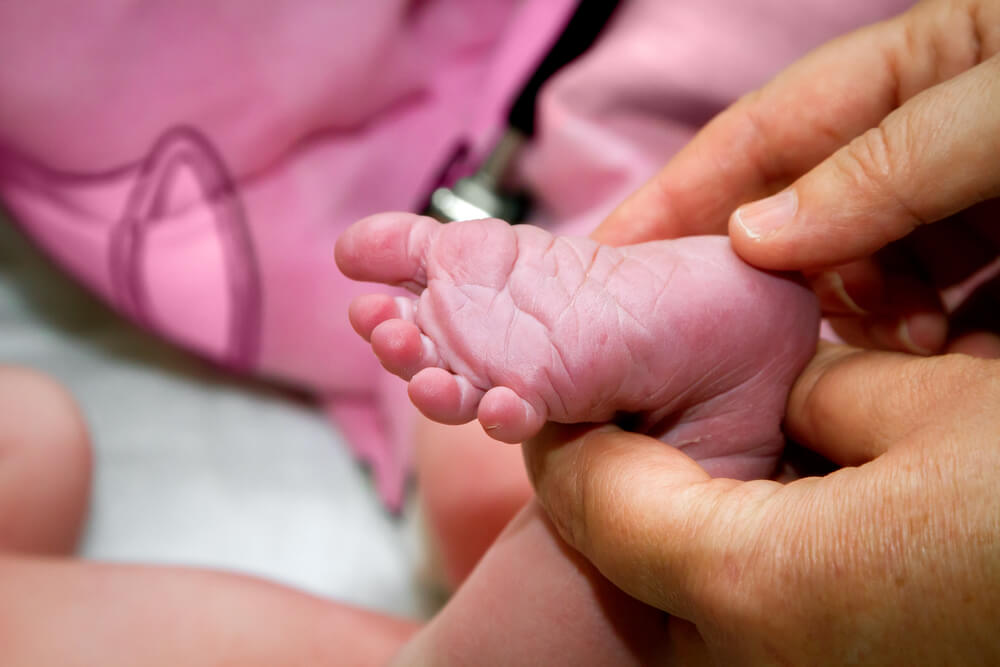Decoding the Language of Infant Reflexes
In the intricate world of pediatric medicine, healthcare providers often turn to a wealth of diagnostic tools to assess the health and well-being of newborns and infants. One such tool is the Babinski sign, a neurological reflex that can provide valuable insights into the maturation and functionality of an infant’s nervous system. In this comprehensive exploration, the experts at Worldwide Pediatrics Group delve into the nuances of the Babinski reflex, shedding light on its significance, how it manifests in infants, and what a positive Babinski sign might indicate about neurological development.
Understanding the Babinski Reflex: A Primer
The Babinski reflex, named after the French neurologist Joseph Babinski who first described it in 1896, is a neurological response elicited by the stimulation of the sole of the foot. In a typical response, stroking the outer edge of the sole causes the toes to fan out and the big toe to dorsiflex (bend upward), while the other toes may also splay out. This reflex is present in infants from birth until around the age of 2, after which it is gradually replaced by the adult plantar reflex.
The Development of the Babinski Reflex in Infants
The Babinski reflex plays a crucial role in the early neurological development of infants. In the first few months of life, it is perfectly normal for a newborn to exhibit a positive Babinski sign. This response reflects the immaturity of the nervous system and the ongoing myelination of the spinal cord pathways.
During this period, the stimulation of the foot triggers a reflexive response due to the underdeveloped connections between the spinal cord and the brain. As the nervous system matures, these connections become more organized, leading to the eventual disappearance of the Babinski reflex. The emergence and eventual disappearance of the Babinski sign follow a predictable timeline, contributing to the understanding of a child’s neurological progress.

Positive Babinski Sign in Newborns: What It Might Mean
While a positive Babinski sign is considered normal in infants, persistent or reemerging signs beyond the typical age range could signal underlying neurological issues. One common concern is the possibility of cerebral palsy, a group of disorders affecting movement and muscle coordination. In some cases, an abnormal Babinski reflex may indicate damage to the upper motor neurons or an issue with the central nervous system.
It’s important to note that variations in the Babinski reflex timeline exist, and individual differences should be considered. Some healthy infants may exhibit a positive Babinski sign slightly beyond the usual age range, while others may show signs of the reflex disappearing earlier than expected. However, when there are concerns about the persistence or absence of the Babinski reflex, consulting with a pediatrician or a neurologist becomes paramount.
Clinical Evaluation of the Babinski Reflex
The Babinski reflex serves as a valuable diagnostic tool, unveiling potential neurological conditions in infants. Among the various clinical conditions associated with abnormal Babinski reflex responses, cerebral palsy stands out prominently. Cerebral palsy encompasses a spectrum of movement disorders resulting from damage to the developing brain, often occurring during pregnancy, childbirth, or shortly after delivery. When a healthcare provider observes an abnormal Babinski reflex in an infant, it may raise concerns about the possibility of cerebral palsy, prompting further evaluation and diagnostic assessments.
In addition to cerebral palsy, other neurological conditions can manifest with abnormal Babinski reflexes, broadening the scope of diagnostic considerations. Spinal cord injuries, whether congenital or acquired, may impact the Babinski reflex, reflecting the intricate interplay between the spinal cord and the brain’s motor pathways. Certain genetic disorders, which influence the formation and function of the nervous system, might also contribute to aberrant Babinski reflex responses. The multifaceted nature of neurological conditions necessitates a meticulous examination of the Babinski reflex as part of a comprehensive assessment.
Contrary to pathological conditions, certain normal variations can lead to transient positive Babinski signs in healthy infants. Premature babies, due to their unique developmental trajectory, might exhibit an extended presence of the Babinski reflex. The premature nervous system’s distinct maturation timeline can result in a delayed disappearance of this reflex compared to full-term infants. Recognizing these normal variations is essential in preventing unnecessary anxiety for parents and guiding healthcare providers in distinguishing between typical developmental patterns and potential neurological concerns.
However, the delicate task of differentiating between normal variations and pathological conditions demands the expertise of a skilled healthcare provider. Pediatricians, neurologists, and other specialists are trained to interpret the nuances of the Babinski reflex within the broader context of an infant’s overall neurological development. Clinical experience and a thorough understanding of the intricate interplay between genetics, gestational development, and neurological function empower these professionals to make informed assessments, guiding parents through the diagnostic process with empathy and precision.
Clinical Conditions and the Babinski Reflex
Several clinical conditions may be associated with abnormal Babinski reflex responses in infants. Cerebral palsy, a group of movement disorders resulting from damage to the developing brain, is one such condition. Other neurological conditions, such as spinal cord injuries or certain genetic disorders, may also manifest with abnormal Babinski reflexes.
In contrast, certain normal variations may lead to transient positive Babinski signs in healthy infants. Premature babies, for example, might display an extended presence of the Babinski reflex due to their unique developmental trajectory. Differentiating between these variations and pathological conditions requires the expertise of a skilled healthcare provider.
Beyond Infancy: Babinski Reflex in Older Children and Adults
As children grow, the Babinski reflex naturally fades away, being replaced by the adult plantar reflex. However, in some neurological conditions, the persistence of the Babinski sign into later childhood or adulthood can be indicative of an underlying problem. A retained Babinski reflex may suggest issues with the upper motor neurons, spinal cord, or other neurological pathways.
In adults, a positive Babinski sign is not a typical finding during a routine examination. If observed, it often raises concerns about conditions affecting the central nervous system, such as spinal cord injuries, brain tumors, or multiple sclerosis. In these cases, a thorough neurological evaluation is crucial to identify the root cause and formulate an appropriate treatment plan.

The Importance of Timely Intervention
The Babinski reflex, while just one component of a comprehensive neurological assessment, holds significant diagnostic value in the early detection of potential issues. Timely intervention and appropriate management can make a substantial difference in the outcomes for children with neurological conditions. Regular developmental check-ups, including neurological assessments, are integral to ensuring the health and well-being of infants and children.
Moreover, fostering open communication between healthcare providers and parents is key to addressing concerns and providing ongoing support. Parents are valuable partners in the developmental journey of their children, and their observations of any atypical behaviors or milestones can contribute crucial information to the diagnostic process. Engaging in a collaborative approach ensures that children receive the multidisciplinary care needed for optimal neurological health, laying the foundation for a future marked by resilience and well-being.
Conclusion: Decoding the Clues in Tiny Toes
In the intricate landscape of pediatric neurology, the Babinski reflex stands as a small but crucial indicator of neurological wellness. Understanding its normal developmental trajectory, recognizing the significance of a positive Babinski sign in newborns, and staying attuned to its presence in older children and adults empower healthcare providers and parents alike to navigate potential challenges with insight and precision. As we decode the language of infant reflexes, we unlock valuable clues that contribute to the early identification and intervention for optimal neurological health.
On the other hand, if you are looking to learn more about the Babinski sign, or looking for options regarding general pediatric care in Plantation and Doral, Florida, consider scheduling an appointment with our providers today.



